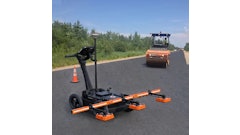Monitoring asphalt quality requires good lab equipment and the results produced depend on how well you maintain that equipment. HMA Lab Supply recommends the following weekly maintenance approach:
Lift check
This procedure allows you to monitor airflow through the furnace chamber. Reduced airflow means less oxygen-rich air being pulled into the chamber, which means longer burn times. With the furnace chamber COLD, turn on the furnace and hit the START button. Watch the weight display window and note numbers appearing. You should see numbers of –3 grams to –6 grams. The blower is attempting to lift the weighing platform off the four ceramic tubes that go down to the top of the scale/load cell. The higher the numbers, the cleaner your furnace blower and exhaust chamber. Lower numbers indicate a buildup of soot in the blower/exhaust system. Refer to your owner's manual for cleaning instructions.
Allow furnace to run for 30 seconds as shown in the elapsed time window and hit the STOP button. Allow furnace to continue heating for an additional three minutes then turn the furnace OFF.
Heating element check
There are four series of Thermolyne NCAT Asphalt Content Testers, 859, 945, 1087 and 1275. Series 859 and 945 have the filter assembly hanging down inside the top of the chamber. The 1087 and 1275 series have the filter assembly built in above the actual ignition chamber.
Check the first three or four digits of the serial number on the plate located on the back of your furnace to determine which element checks apply to your particular furnace.
Series 859/945:
There are four heating element plates in these models. After the furnace chamber has warmed up at the conclusion of the lift check, make sure the green power switch is turned off. Open the chamber door, and with your bare hand, touch the two side plates, the floor and the front edge of the top plate located just above the exhaust filter assembly. They should all be starting to warm up. If one or more of the plates feels cold to the touch, they should be replaced. The back wall of the chamber does not have an element plate.
Series 1087/1275:
There are five heating element plates in the Series 1087 furnace. You can check the four inside the chamber by touching them with your bare hand, just like the Series 859 and 945 above.
The fifth heating element is located above the chamber, and it must be checked as follows: with the chamber at regular ignition temperature (538 degrees C), turn the furnace off with the green power switch. Hold down the #7 key on the keypad and turn the furnace back on with the green power switch. In a couple of seconds the furnace will "beep" and you can remove your finger from the # 7 key.
You will now see two temperatures displayed; the chamber temp display will show the actual chamber temperature. The percent loss window will now display the actual filter element temperature. It should read 750 degrees C. If it is considerably lower, around 500 degrees C, it means that the filter heating element is burned out and it must be replaced. You can now turn the furnace back off and then back on, without holding down any other keys, and the furnace will return to the burn mode.
Additional system checks
Ignition sample cool down shortcut: The faster a sample can be cooled down after a burn, the sooner gradation can be carried out. Using a fan is pretty much out of the question, as it could blow fines out of the sample basket and affect the gradation.
An easier way is to replace the cool down plate provided with the furnace with a simple pre-cast concrete block, 12 inches by 12 inches and 2 inches-plus thick, like a patio stepping stone found at most home improvement or garden centers. It acts like a heat sink, removing heat from the baskets and the sample, usually cooling it down in about 15 minutes.
Blower motor lubrication: Regular lubrication of the bearings in the blower motor is critical. It gets hot up there, and if you don't lubricate the bearings with a high-temperature lubricant — not 3-in-1 oil — the bearings fail, the fan dies and you're not doing any more burns until the blower is replaced. A new blower motor is around $120. A 4-ounce bottle of Anderol 465 high-temperature lubricant sells for $9.50. Do the math. Lubricate often.
Expanding aggregates/slag making life difficult? Besides being a housekeeping headache inside the furnace chamber, those bits and pieces that go flying out of the baskets can change both your oil content and your gradations.
Maintenance for NCAT furnaces
One of the byproducts of the ignition method is the generation of unburned hydrocarbons or volatiles. These usually take the form of sulfur, which is very corrosive and yellowish in color.
These volatiles can be absorbed by the material used to manufacture the heating element plates. Left unattended, they will eat the heating element wires embedded in the plates. To eliminate this buildup, you must elevate the chamber temperature to 560 degrees C and allow the furnace to sit at that temperature for two hours. Do not hit the start button, as this will cause the blower to pull cooler room air through the chamber and reduce the chamber temperature.
The goal is to have your ignition chamber remain as clean and white as it was when it was new.
If you see a darkening of the insulating material on the back of the door, this usually indicates an air leak around the door. Adjust the door and latch assembly as shown in the owner's manual.
It's also a good habit to occasionally remove the four ceramic tubes that go through the floor of the chamber to the scale/load cell below and examine them for the brownish volatiles. The volatiles can also accumulate on the tubes and drip down over the scale. If there is a buildup of volatiles on the tubes, you can simply place them in the chamber during the weekly 560 degree C burnout of the chamber to remove the volatile buildup.
Left unchecked, the volatiles could eventually overflow the catch pan on top of the scale/load cell and cause it to fail.
Replacing heating elements
Follow the instructions in your owner's manual. Here's a tip to make it easier to install the new element plates. The new plates come with extra-long leads. After you have loosened the clamps holding the leads from the old plate and before you remove the element plate, slide a piece of plastic tubing over the old lead wire from the rear of the furnace. We've found that plastic coffee stirrers or drink straws will work.
Then, after you have removed the old plate and are sliding the new element into place, feed the lead wires through the plastic tubing. It makes it a whole lot easier than poking around through the insulation trying to find the holes. After the element plate has been pushed in as far as it will go, go around to the back of the furnace, slide off the tubes, tighten the clamps — making sure that the element wires are centered in the clamping assembly (if not centered, it's possible that the wire may be contacting the metal cabinet and shorting out — as evidenced by tripping circuit breakers) and cut off the excess wire.

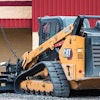


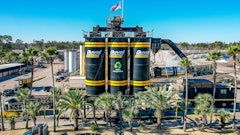
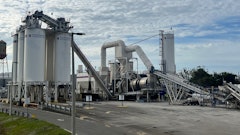

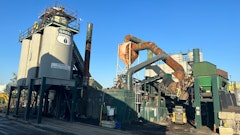




![Img 1707[56]](https://img.forconstructionpros.com/files/base/acbm/fcp/image/2023/04/IMG_1707_56_.6437076c97961.png?ar=16%3A9&auto=format%2Ccompress&fit=crop&h=135&q=70&rect=0%2C462%2C1920%2C1080&w=240)


